Nagaland: Kohima + Wokha – Eggwinning in the mud
7. November 2025

The view from my bed that morning already looked very promising! I had wanted so much to be in Nagaland on November 7th because that’s when the Tokhu Emong Festival takes place in Wokha, a kind of harvest festival celebrated by the Lotha people, who mainly live in the Wokha region. Wokha is about a 2–2.5 hour drive from Kohima, doable but still quite far. My local contact suggested I should rather watch the celebrations in Kohima, since the Chief Minister would be attending there. Abul suspected that not many Lothas would be in Wokha anyway, as most would probably head to Kohima for the main event. Since Kohima stretches out quite a bit and the celebration was being held at the far end of town, I once again made use of Abul’s driving services and off we went to the Nagaland Baptist Church Council Convention Centre.
 NBCC
NBCC
The hall was actually quite large, but not at all what I had imagined a harvest festival in Nagaland to look like… Still, should I have gone to Wokha instead? Well, for now I decided to stay. No need to start complaining right away. I took photos and was even given a media pass.
 Media
Media
The hall began to fill up, the warriors lined up, the men in suits conferred with each other, and everyone looked elegant and festive. In fact, what was really being celebrated here was the 50th anniversary of the Lotha Hoho — it just happened to fall on the same day.
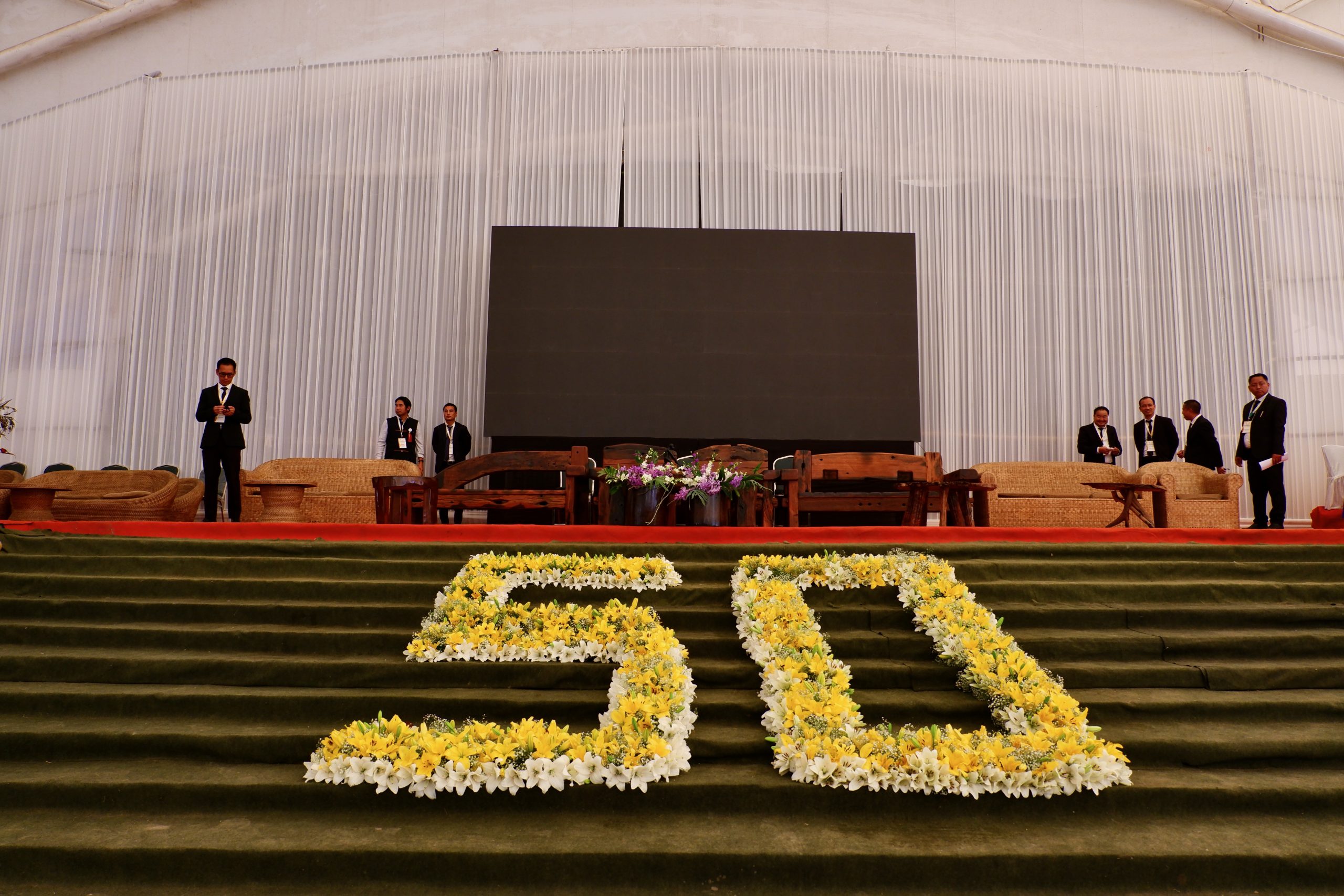 Hall
Hall
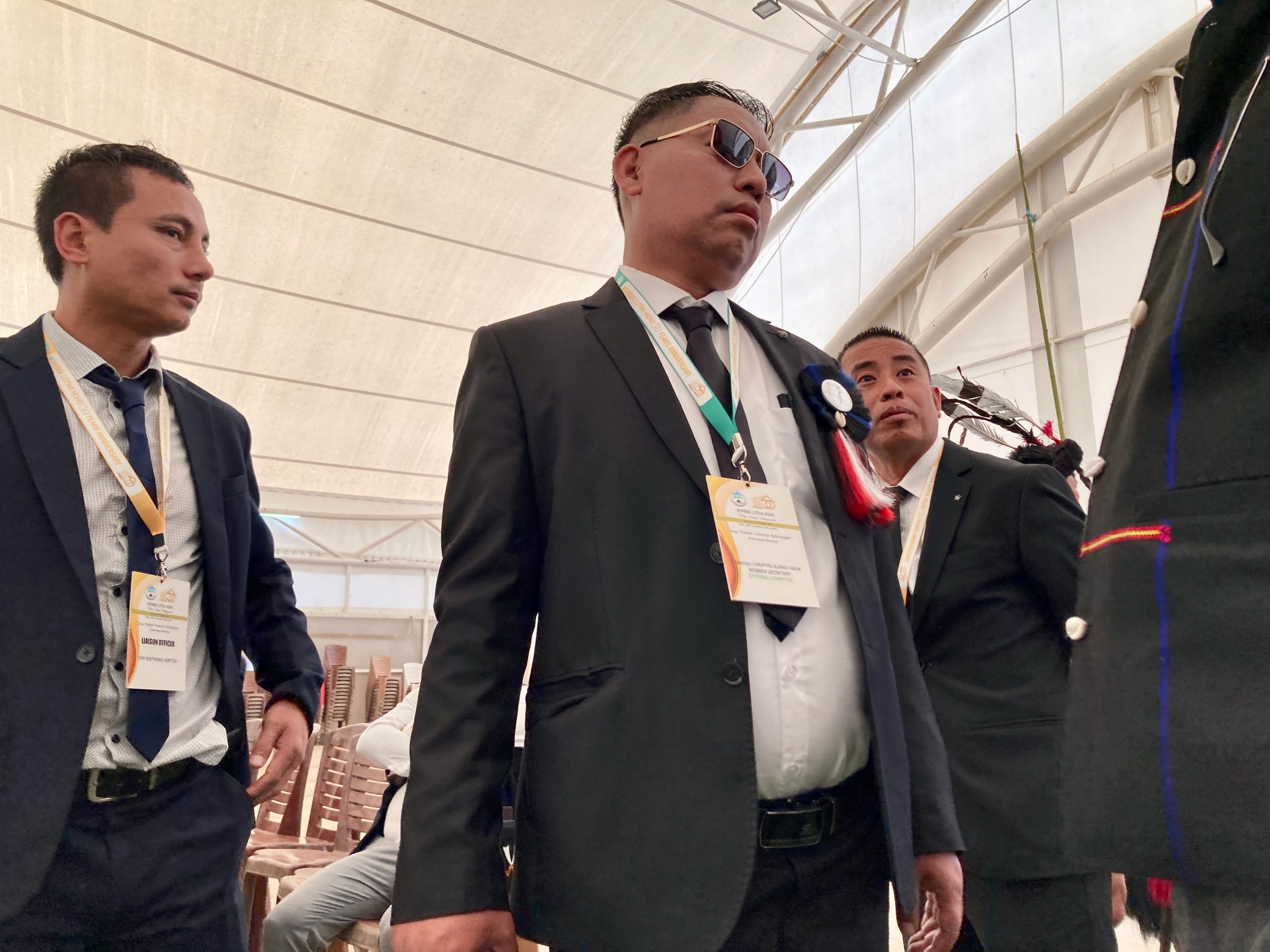 suitsmen
suitsmen
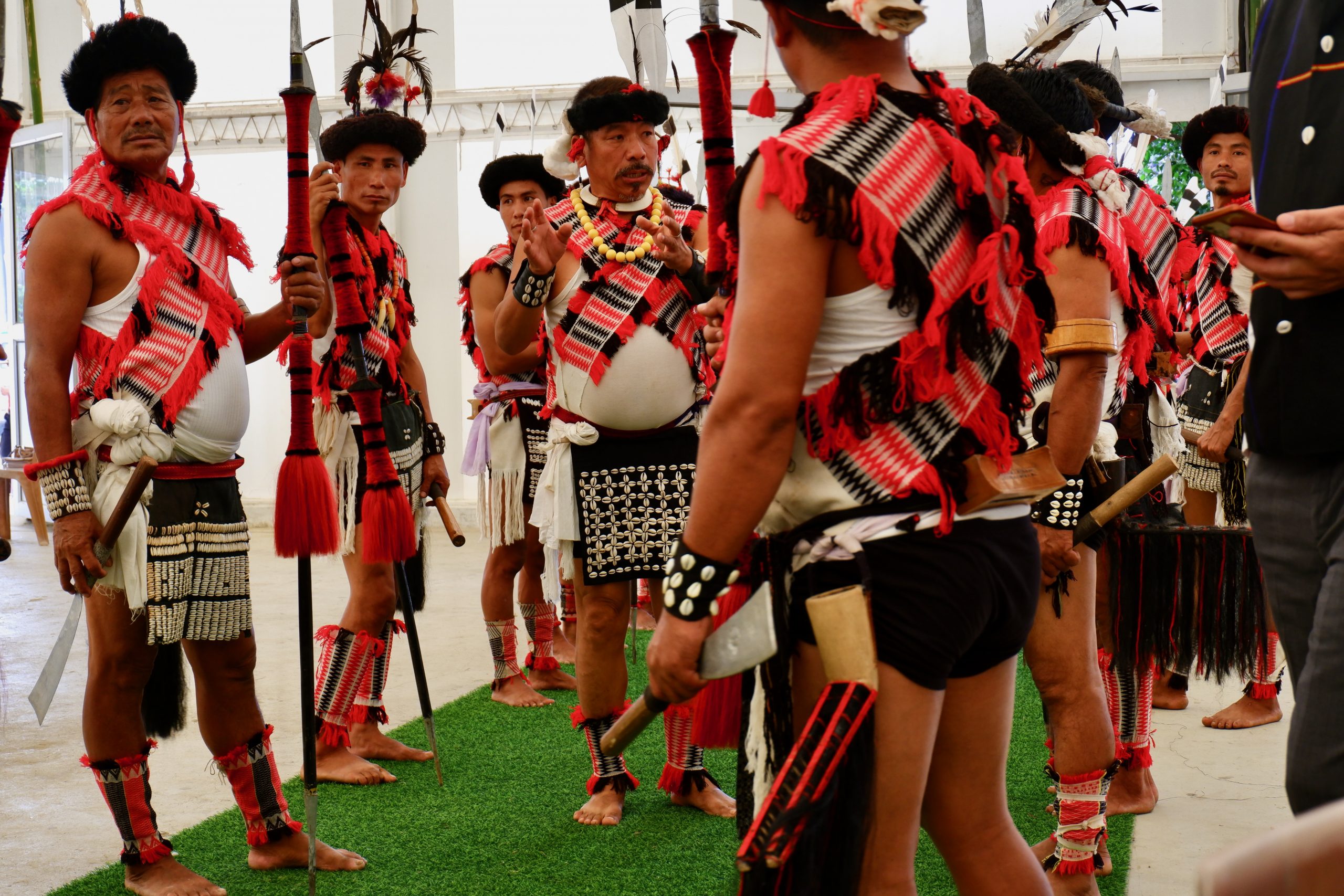 warriors
warriors
A Hoho is a kind of traditional tribal council. There is one for all Naga tribes collectively, and one for each tribe individually. They are responsible for:
- promoting unity and cooperation among members of the tribe
- Solutions for quarrels following traditional norms
- representing them in dealings with the government or other external actors
- preserving and promoting the tribe’s culture and language
DThe Hoho of the Lothas was founded 50 years ago, and that’s why the Chief Minister came to honor the occasion. He wore a white suit.
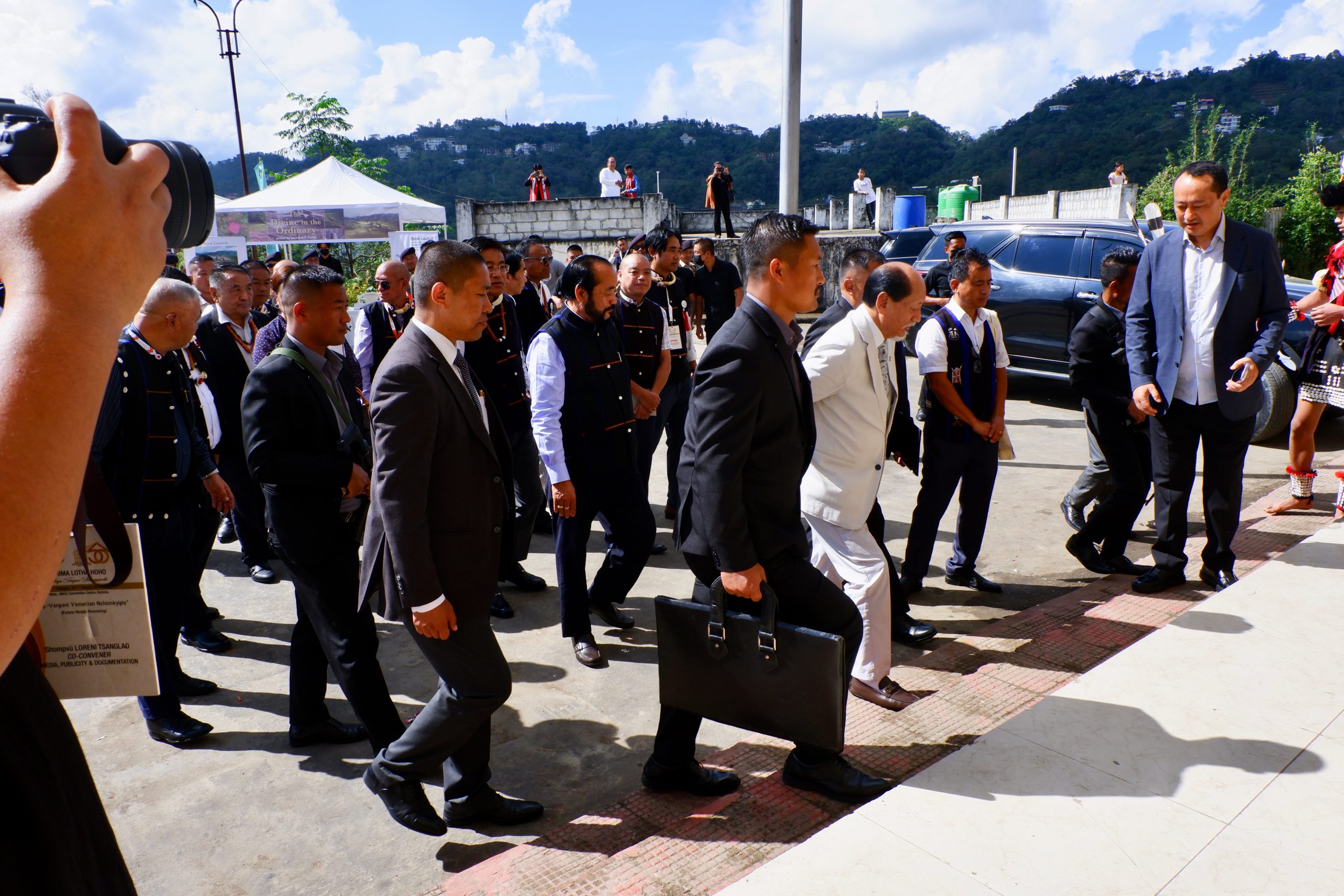 Arrival
Arrival
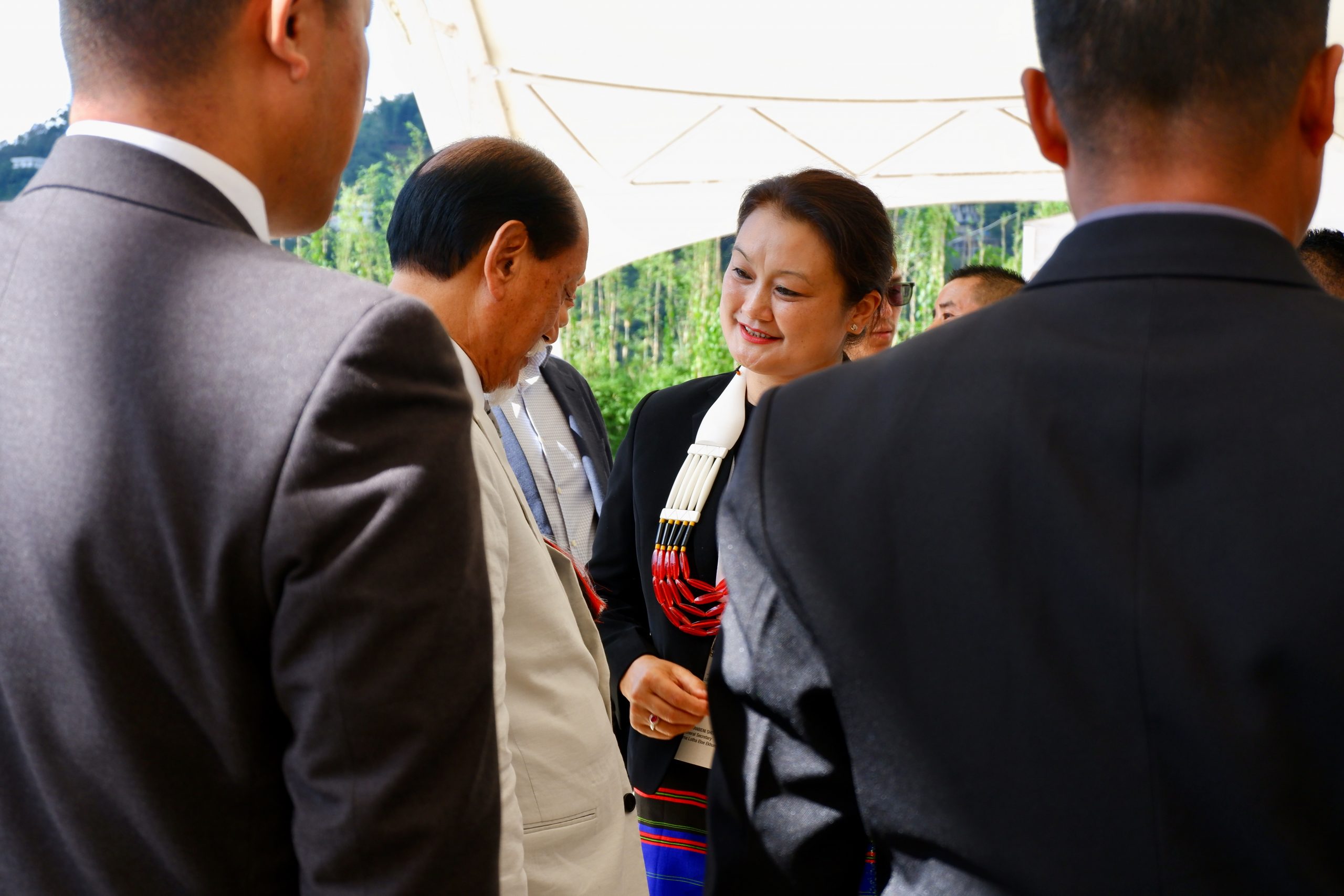 welcome
welcome
 honour
honour
The whole event had to be heavily guarded — not only by the military but also by a warrior standing ready, along with men in suits.
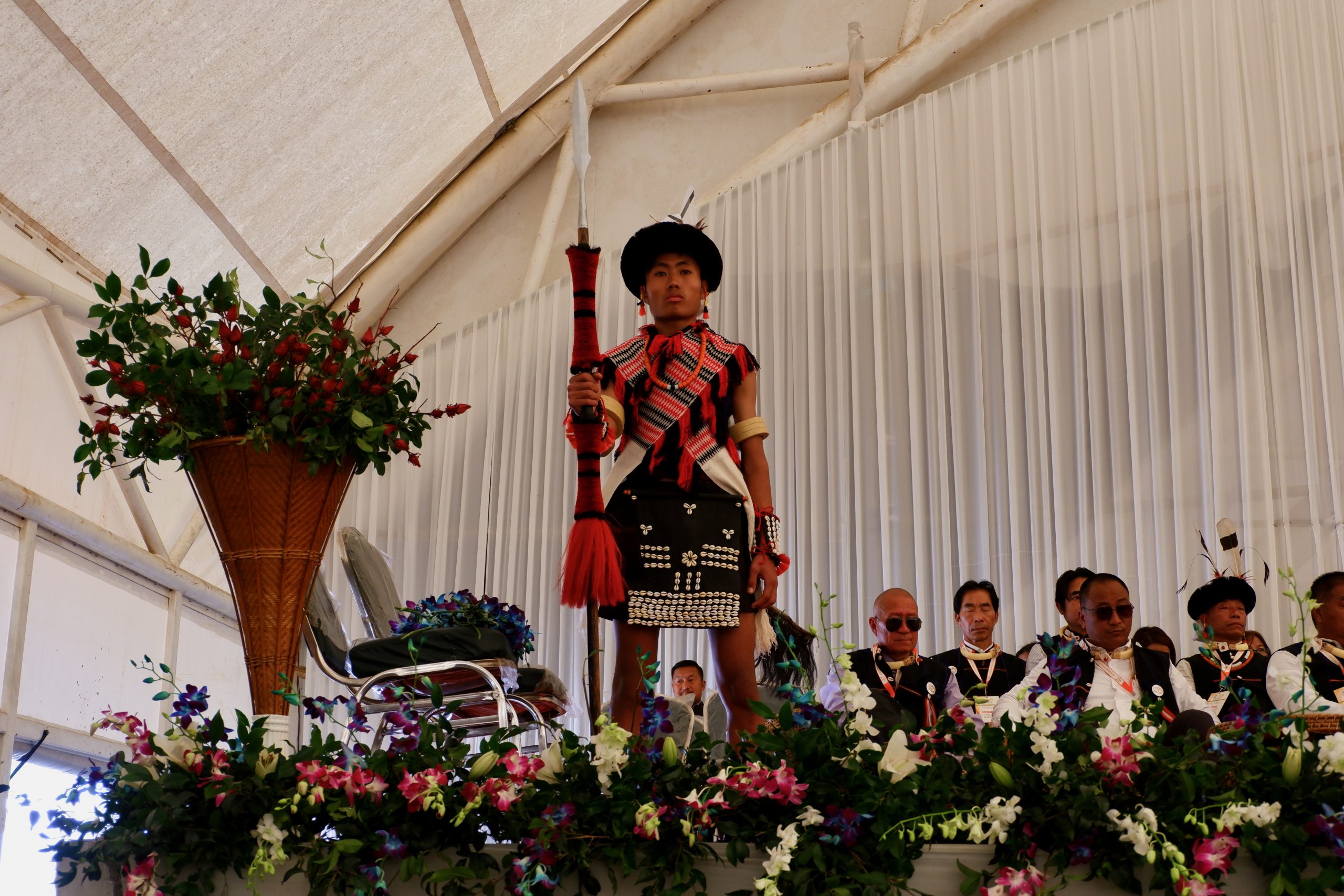 watchman
watchman
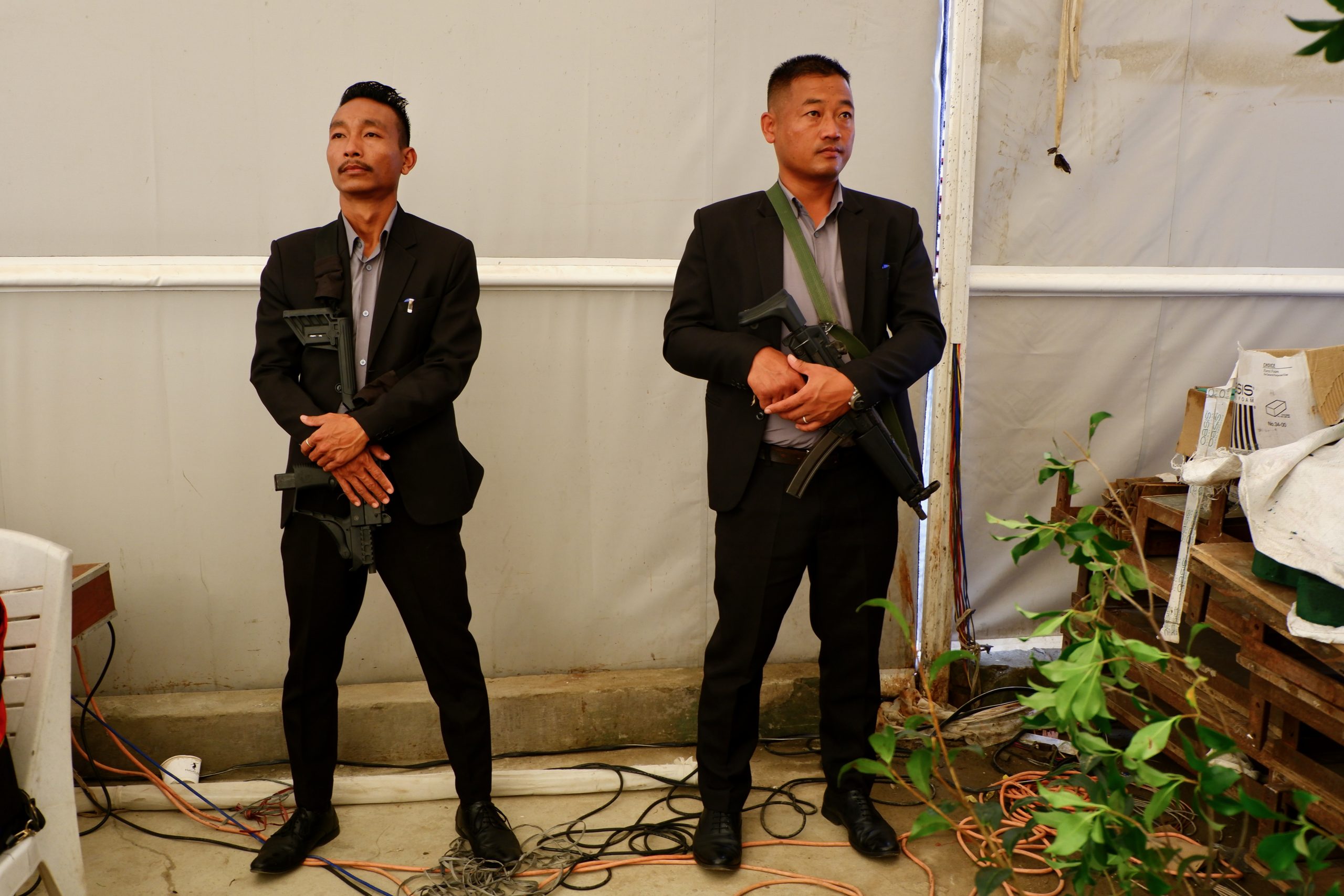 Protectors
Protectors
There were speeches, and the honored guests received gifts — and what I found amusing was that some of their wives were also called up and given presents. Over the microphone they announced: “The ladywife of xxx, please come…” If there’s a ladywife, then is there also a gentlemanwife or a ladyhusband? What’s the point of the double title?
These honors went on and on, and I started to get bored. After this picture:
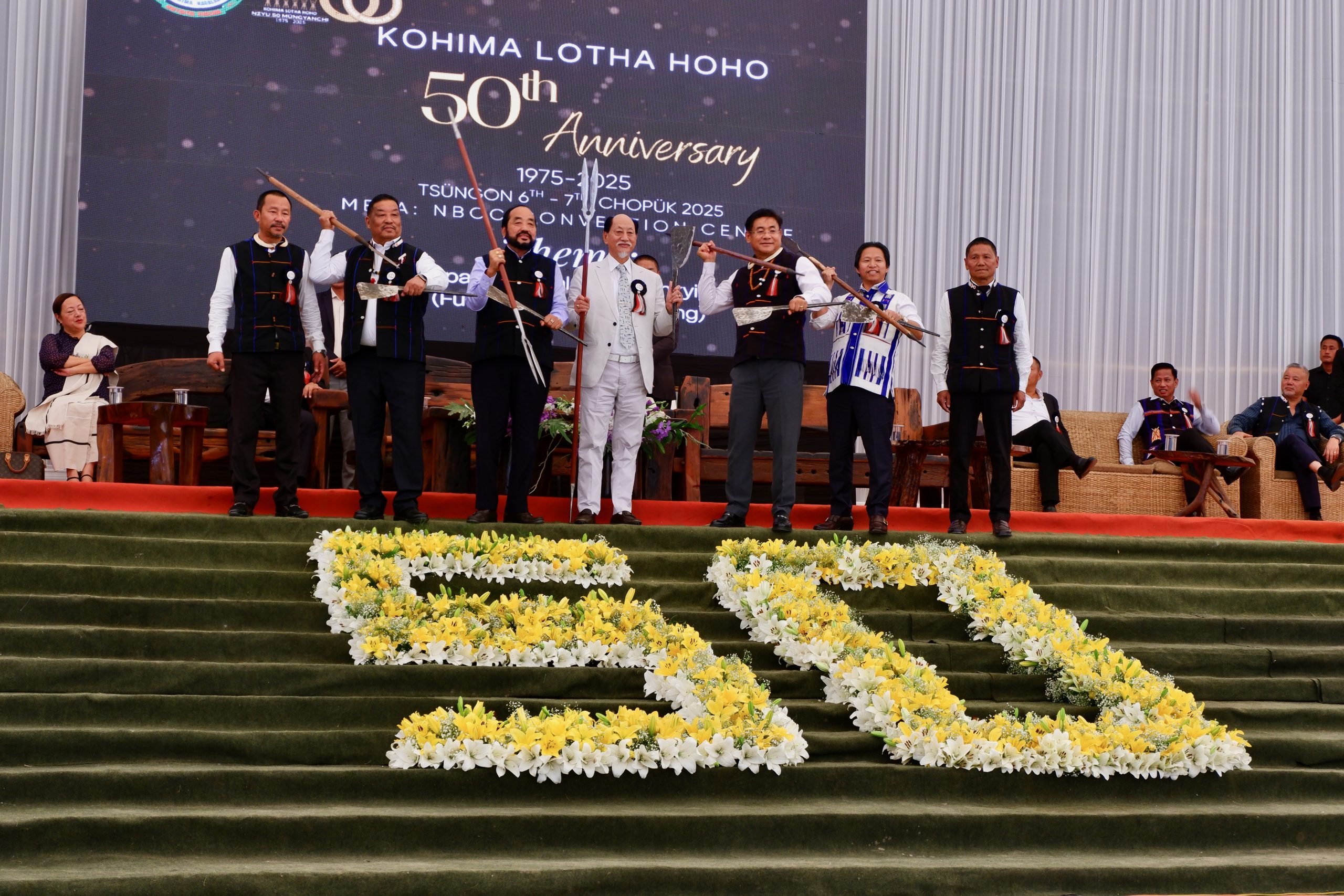 finishing honour picture
finishing honour picture
I decided to head to Wokha after all — maybe I’d still catch some wonderful moments there. And to give it away already: yes, I did!
Unfortunately, the drive dragged on along winding, bumpy roads, and we had to stop for a coffee break in between. That at least gave me a chance to see a slightly nicer local place.
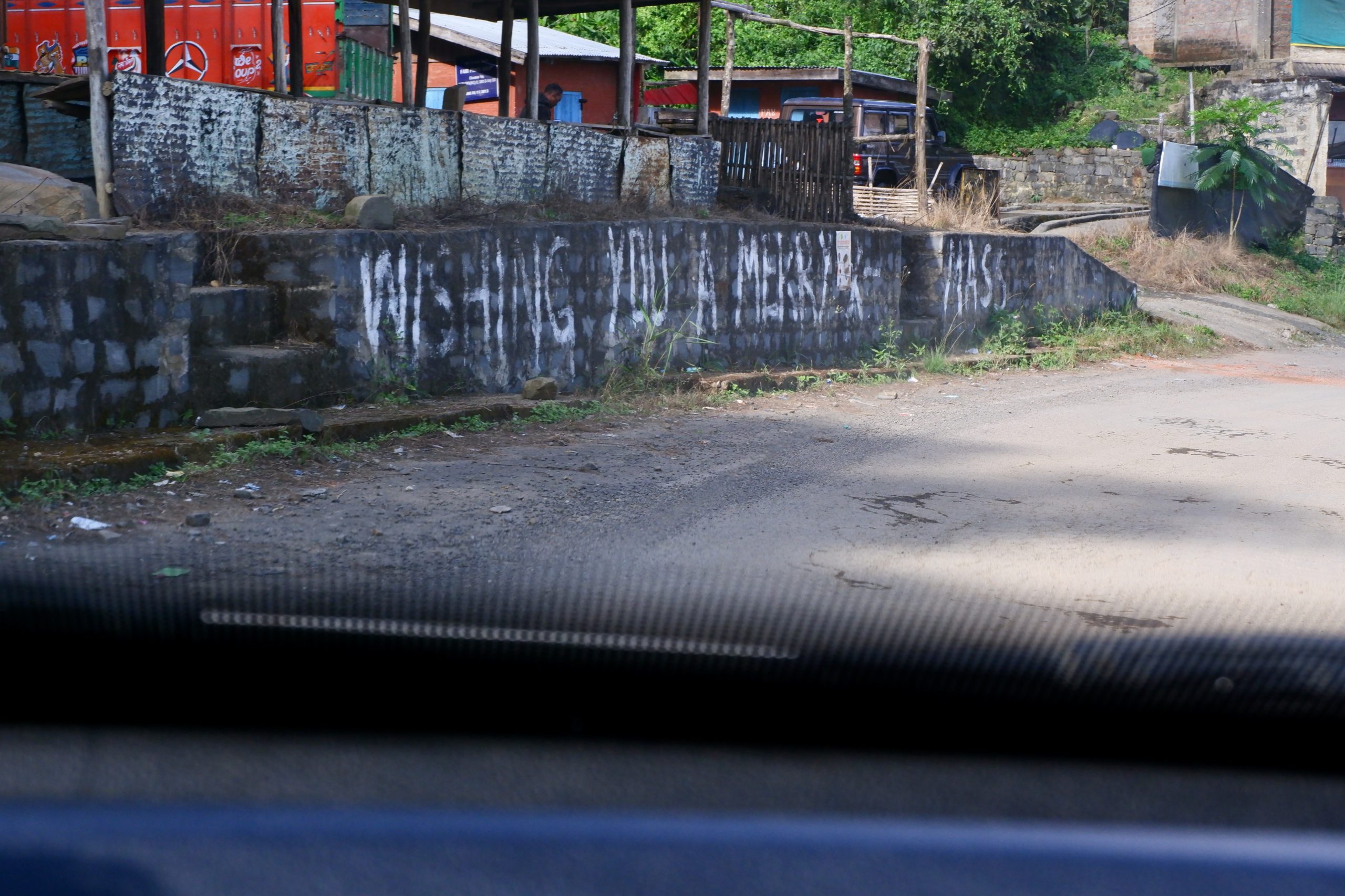 drive
drive
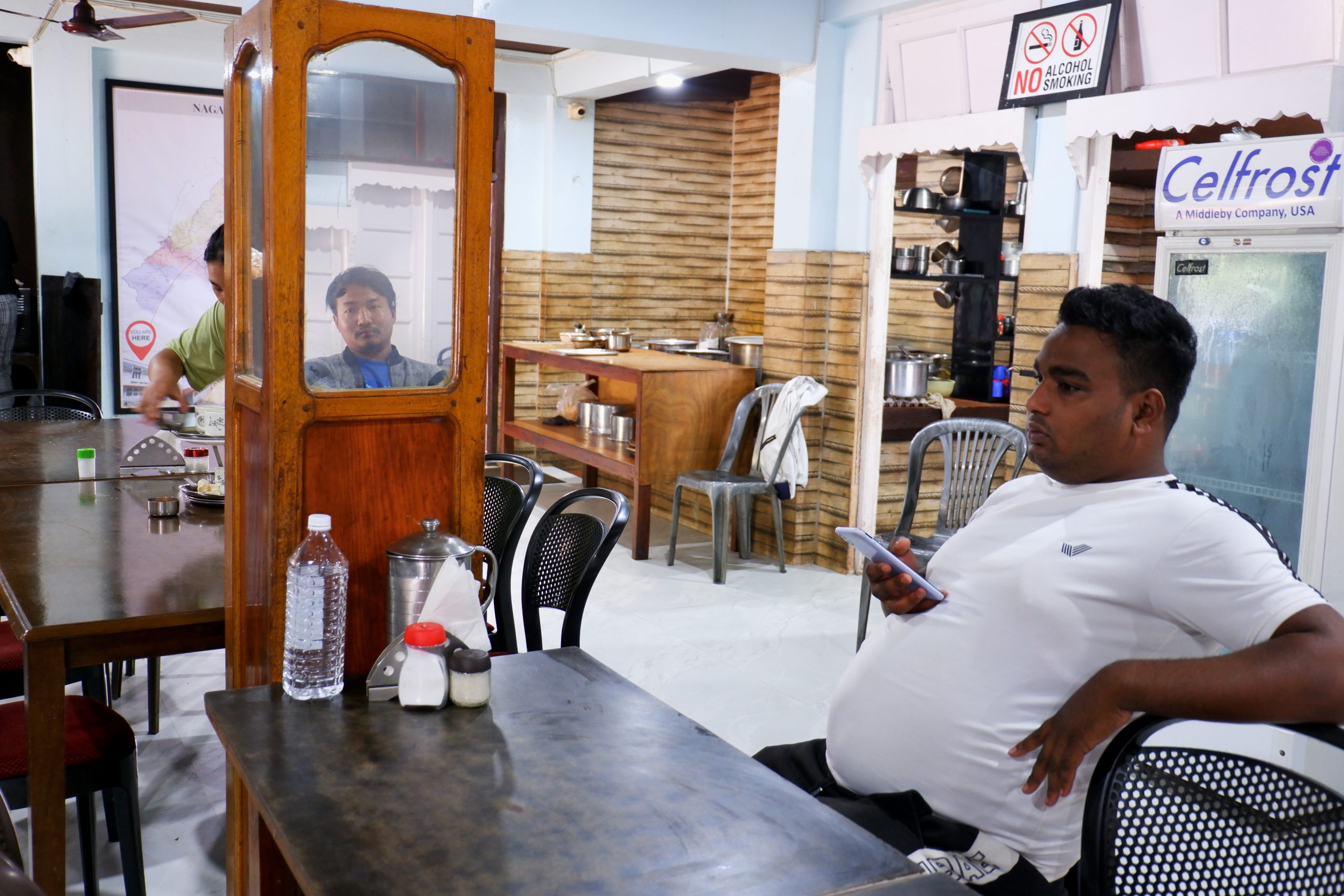 Eatery
Eatery
In Wokha, the main cultural program had actually already finished. Tokhü Emong lasts several days, but only on this one day is there a big public celebration for everyone. Wikipedia has quite a bit of information about it — here’s the link. I’ll pick out one aspect: people invite each other to eat together, and the number of pieces of meat offered indicates the depth of friendship. If you’re served 12 pieces, it means you’re very close; 6 pieces suggest more of a casual acquaintance. Through this ritual, people reaffirm that they’ll help each other in times of trouble. Of course, it’s ideal if, during the return visit, you’re offered the same number of pieces in return.
In Wokha, there’s a large festival ground with a stage and many stalls. There were still a few people around. Since it had rained heavily in the days before, the ground was quite muddy — but that didn’t stop many ladies from making their way through it in high heels.
 Ballons 1
Ballons 1
 Ballons 2
Ballons 2
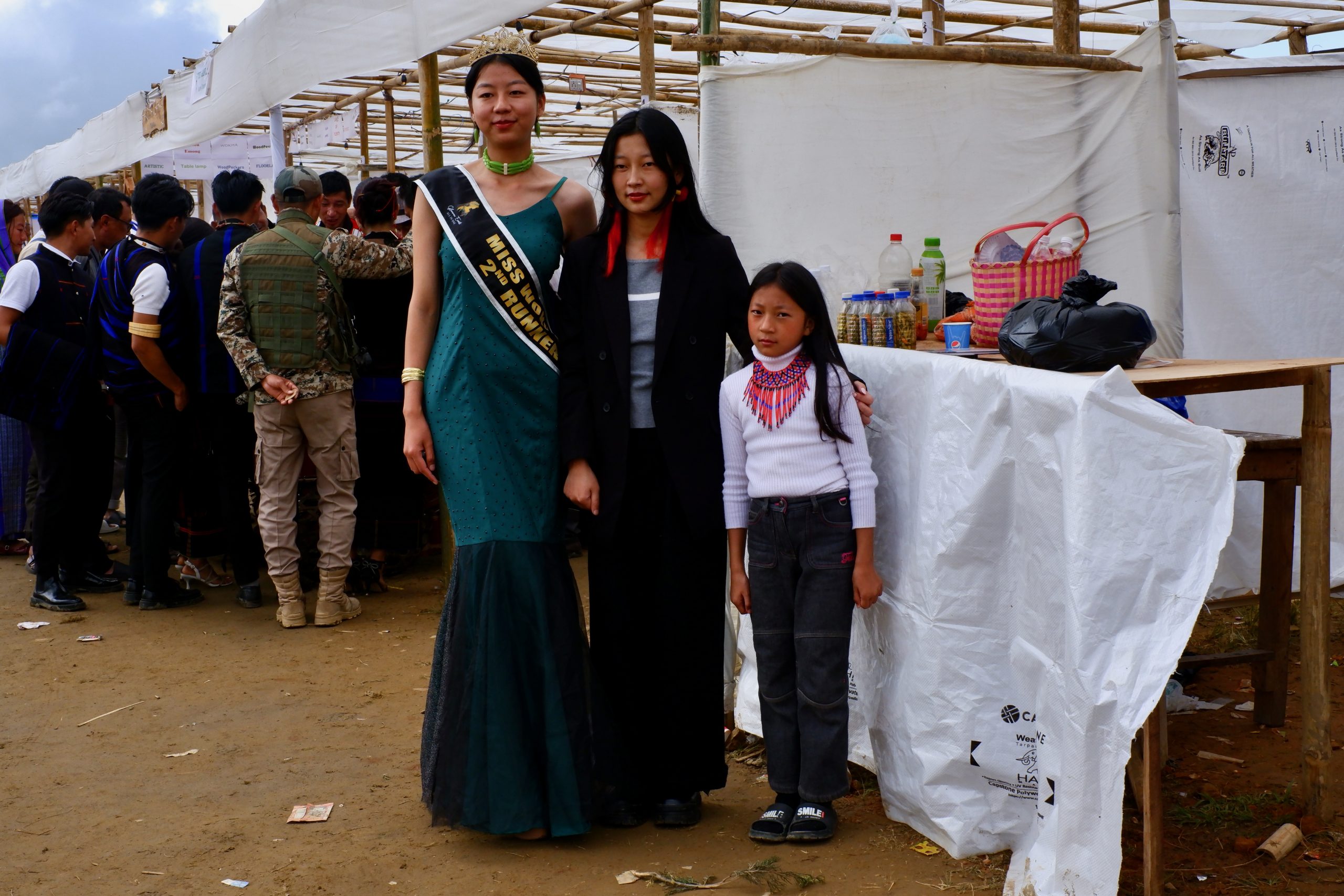 Miss
Miss
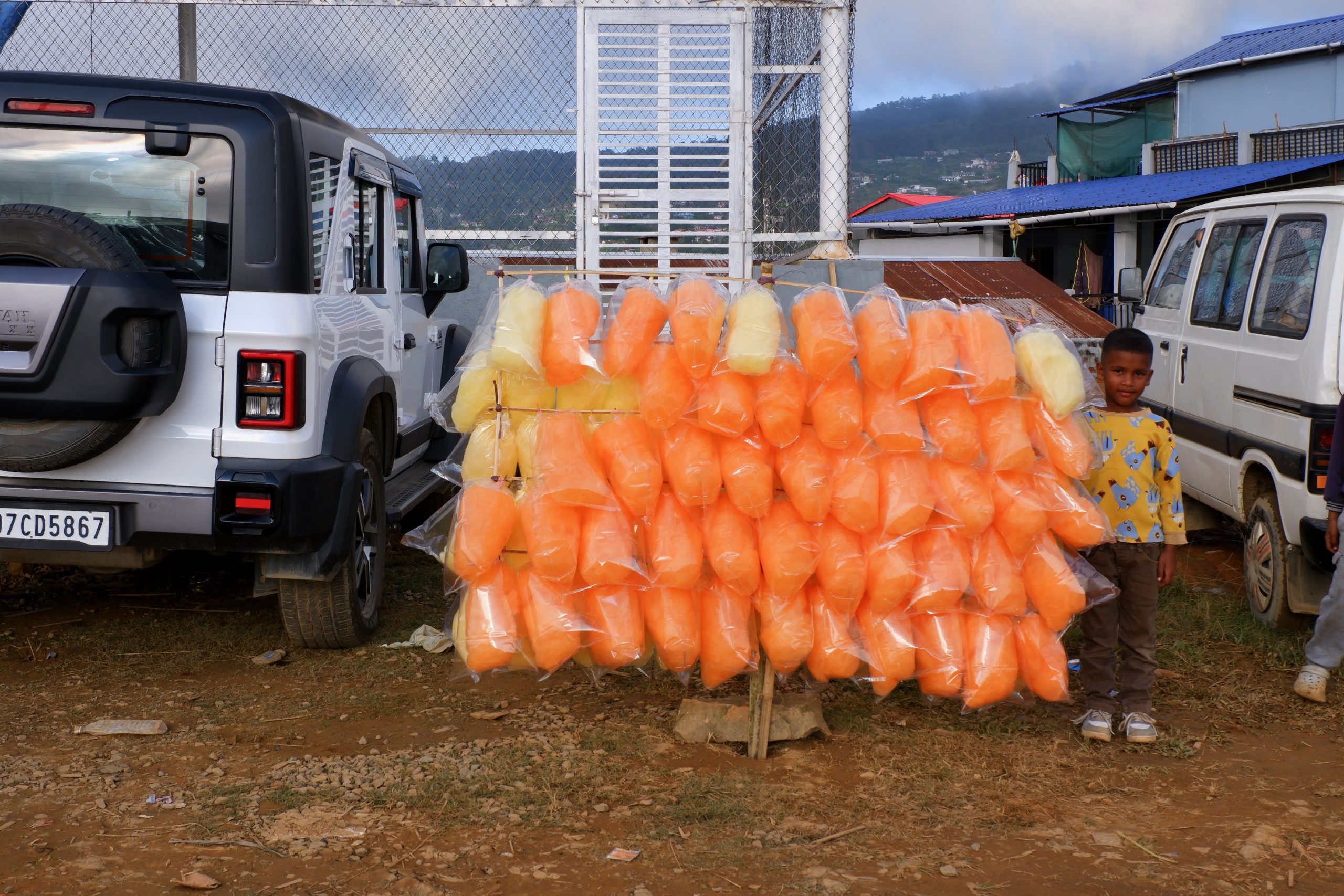 Food
Food
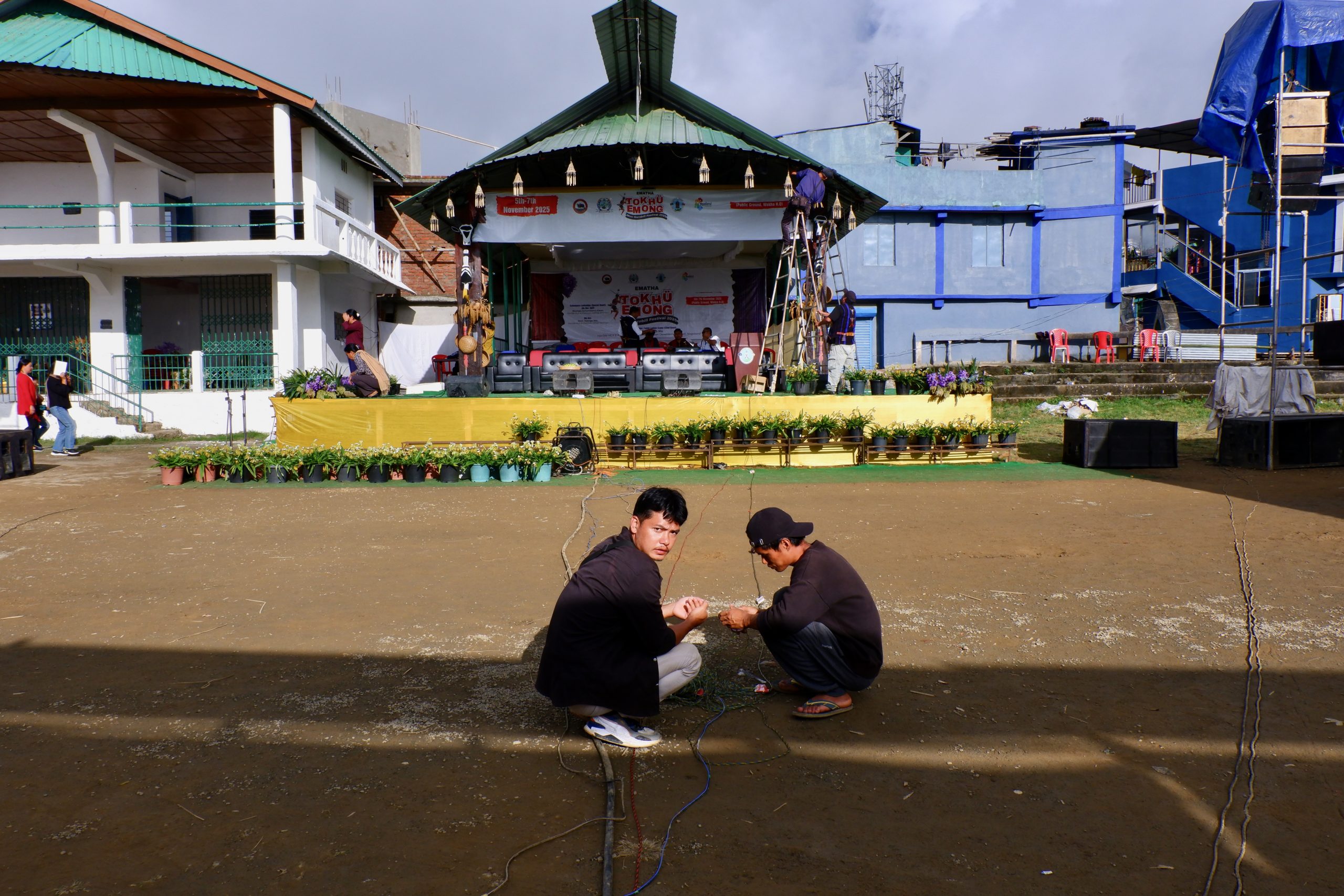 stage
stage
What was really great was that I met a new person — Pauls from Kerala. Sreejith knows him and put us in touch. He actually studied engineering (including in New Zealand), but he thinks that tourism might be the better path because of its flexibility. He’s interested in the similarities (in various aspects) between the Māori and the local tribal communities and envisions tourism built around that focus. But first, he needs to get to know people to collaborate with — and that’s why he’s here.
People here often like to shake hands — a lot. And this gentleman even had his very own special way of doing it. On the left is Pauls.
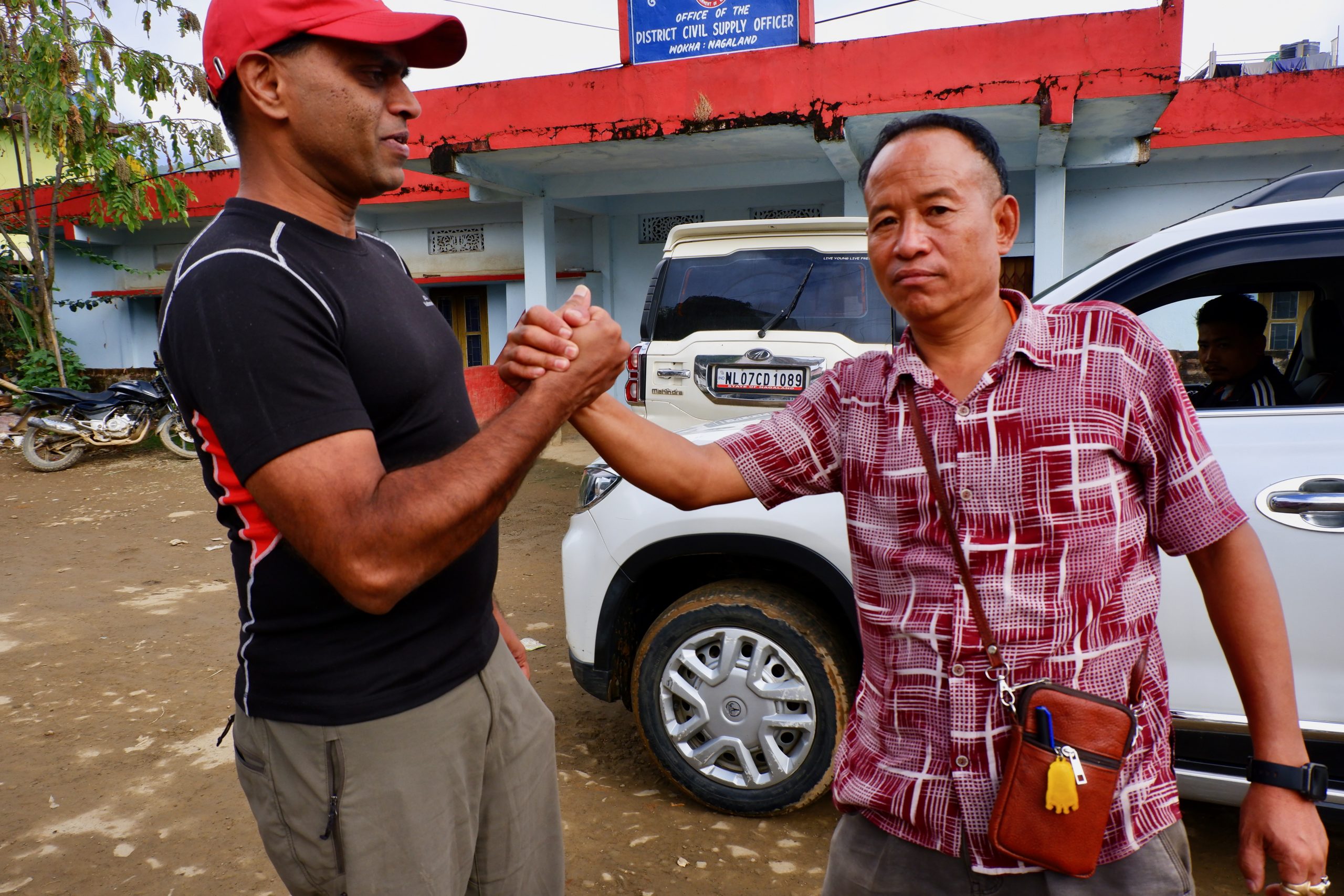 Handshaker
Handshaker
So far, I find the people here remarkably kind, open, and gently outgoing. As we were sitting around, another gentleman came up to us and asked where we were from, why we’d come, and whether he could show us the local museum. Of course — yes! And that’s where we learned a lot.
 Museum left
Museum left
 Guide – with plate
Guide – with plate
I’m not even sure where to begin… Maybe with the fact that we were puzzled to see items from the sea. It’s not really clear where the Lothas originally came from — and so it’s also unclear how all these shells found their way here. Or did they trade for them? With whom?
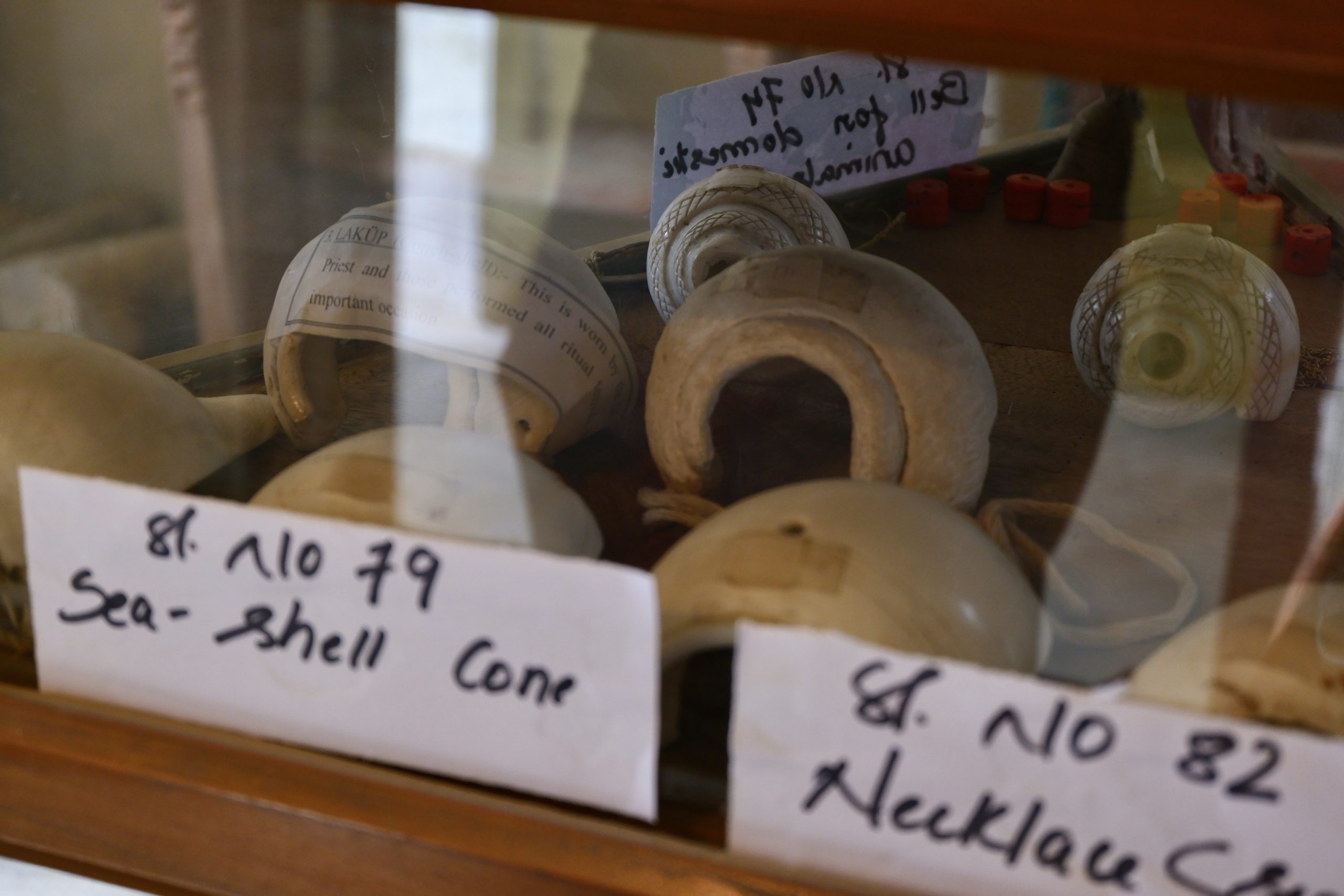 1
1
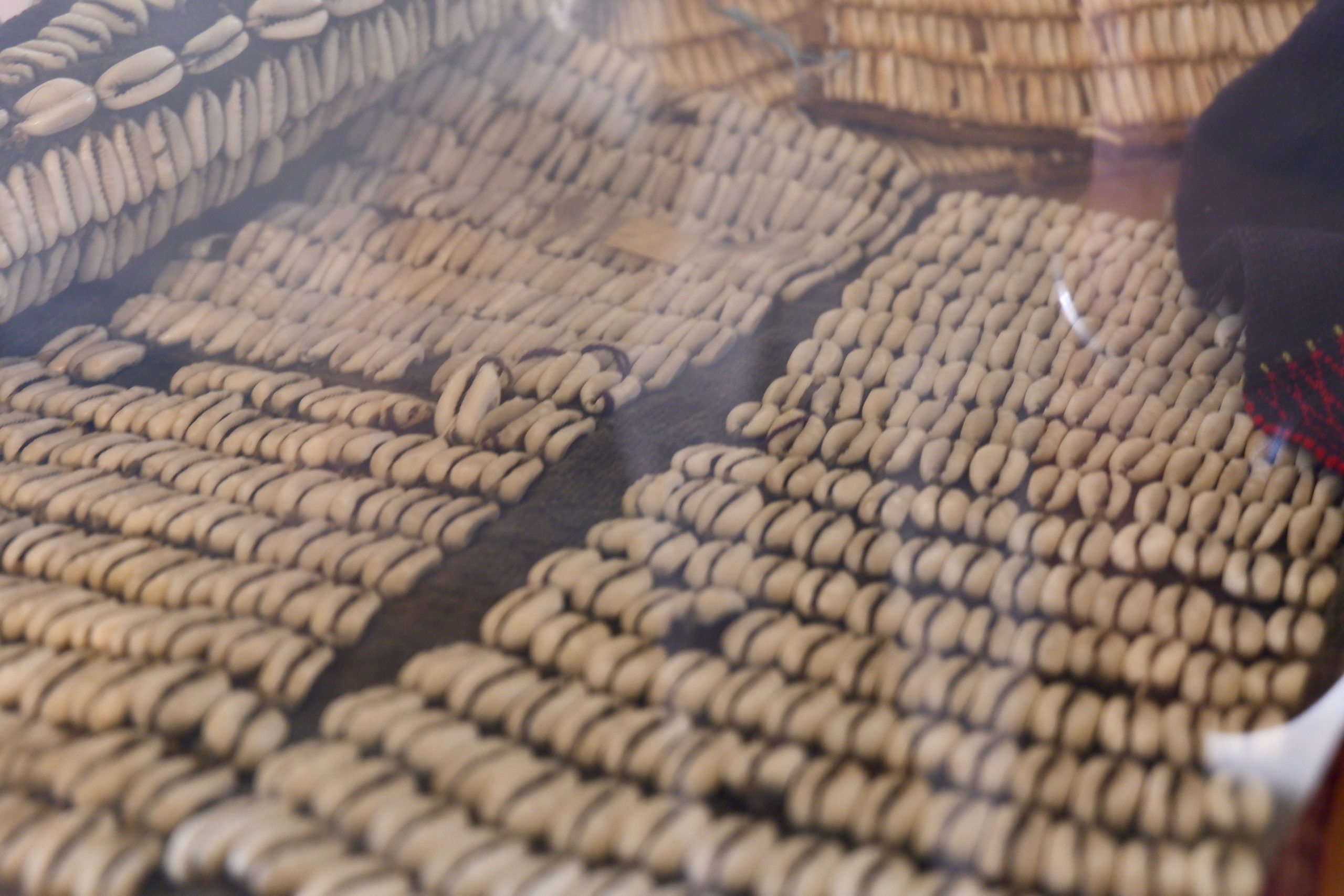 2
2
Then there was a pillar covered with important symbols — arranged from bottom to top:
- Mithunhead: strength and power
- Hornbill: fame and warrior spirit
- Breasts: Fertility, life
- bells: connection to the spiritual world
Breasts aren’t all that common as a symbol in these societies. Interestingly, Bhutan — not all that far away — places symbolic importance instead on the penis..
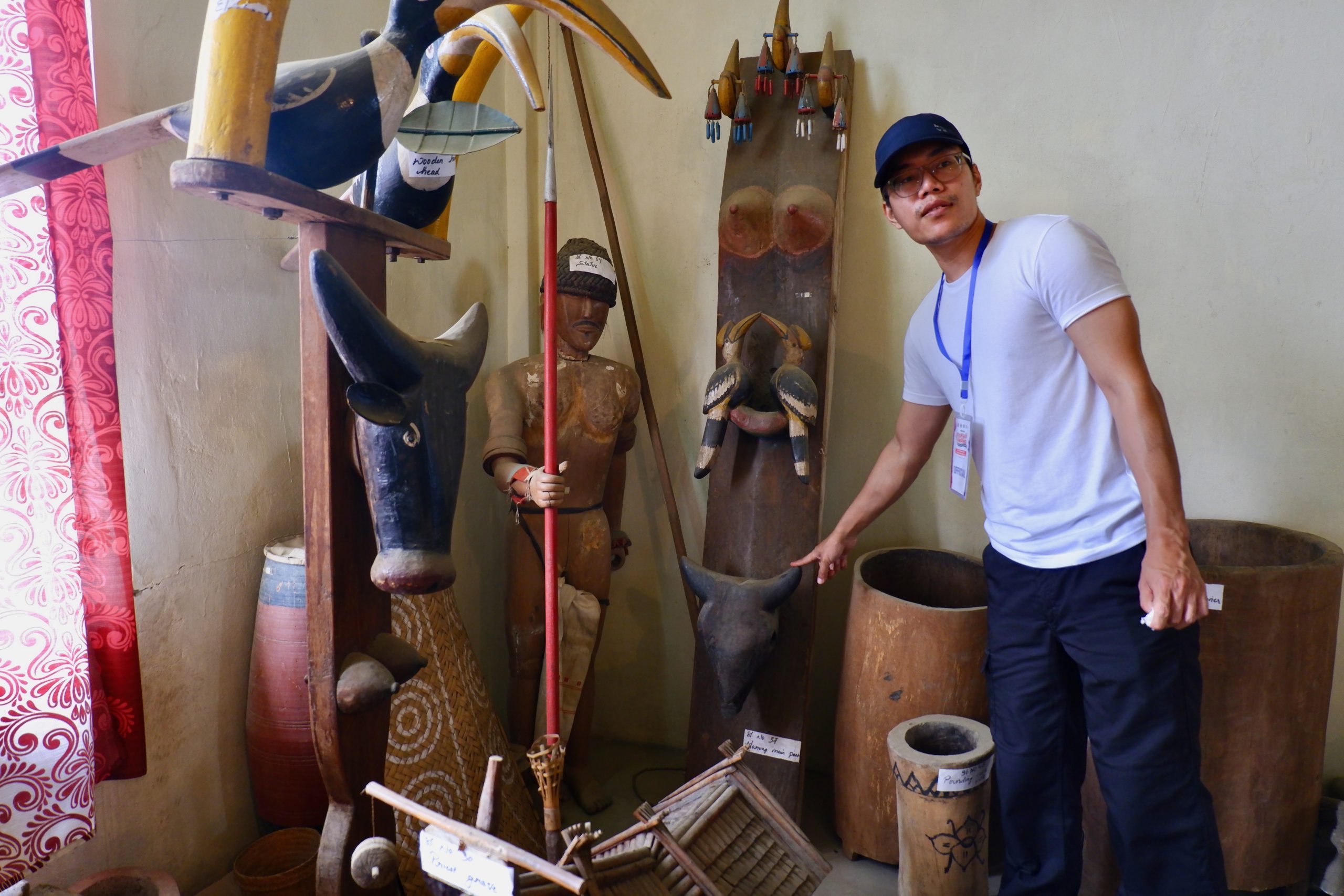 Pillar
Pillar
This museum also holds a real rarity: pillory chairs! Wrongdoers were placed in them and publicly shamed. They’re built entirely without nails!
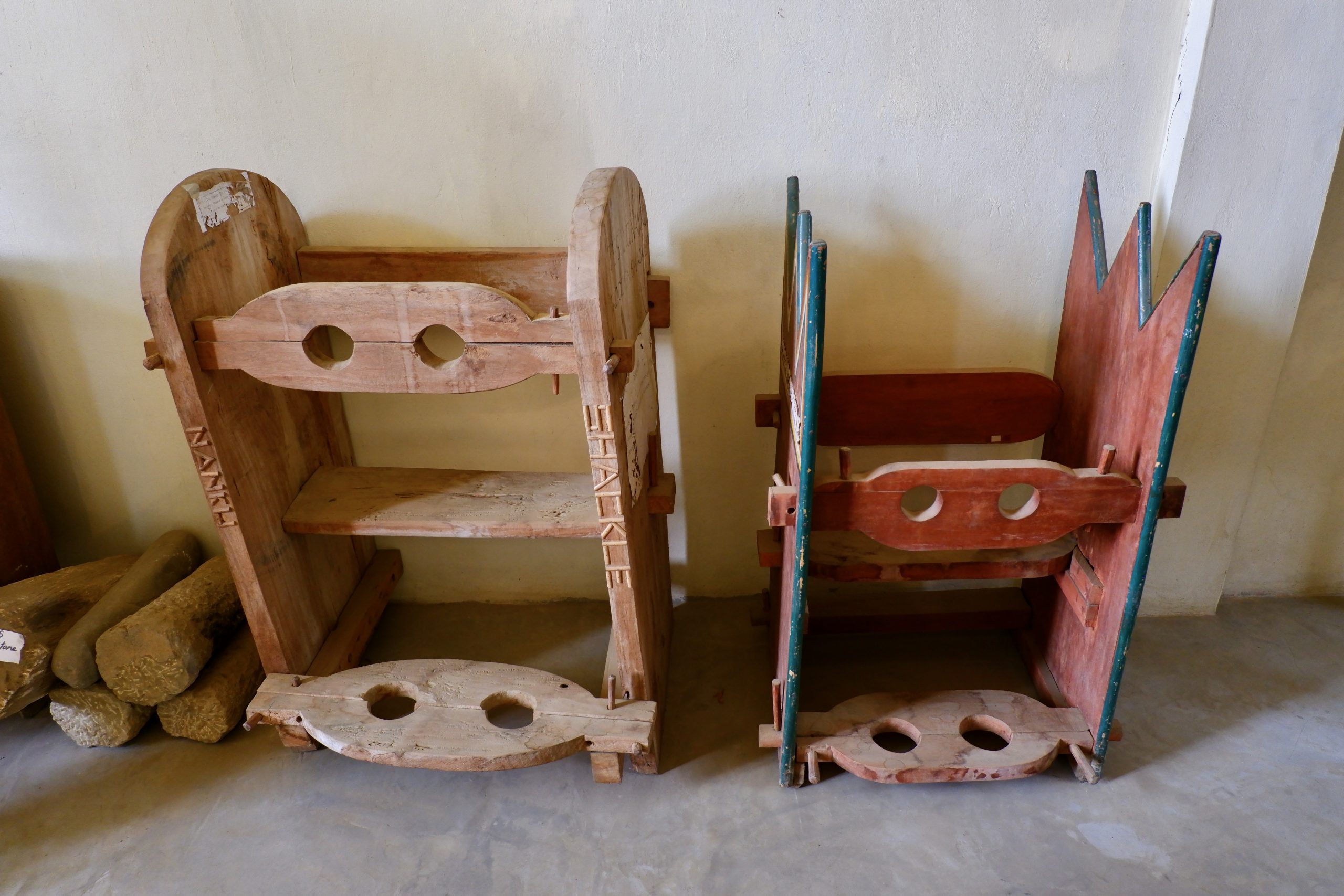 Pillory chairs
Pillory chairs
Back to the breasts for a moment. The Lothas, like most Naga tribes, were once headhunters. There’s a story about that (well, about headhunters in general):
In earlier times the warriors fought other tribes and sometimes came home victorious. But the women mocked them: “You say you won? We don’t see any proof! Whom and how many did you defeat?” The men then thought: OK, we’ll bring proof — and they carried home torsos. But torsos were heavy and awkward to carry; they slowed you down and the enemies could overpower you again. So that wasn’t a good idea. What would be lighter and still show their victory? Heads. That was practical — and so it was kept.
The head is also highly symbolic. It holds the life force — and that was something one wanted to keep for one’s own people, not the enemies. When a community became too small, it risked being overpowered or even dying out. So fertility and life force were essential for survival.
Spears and shields were the usual weapons of war. But later, some rather strange rifles also came into use.
 Pauls with weapons
Pauls with weapons
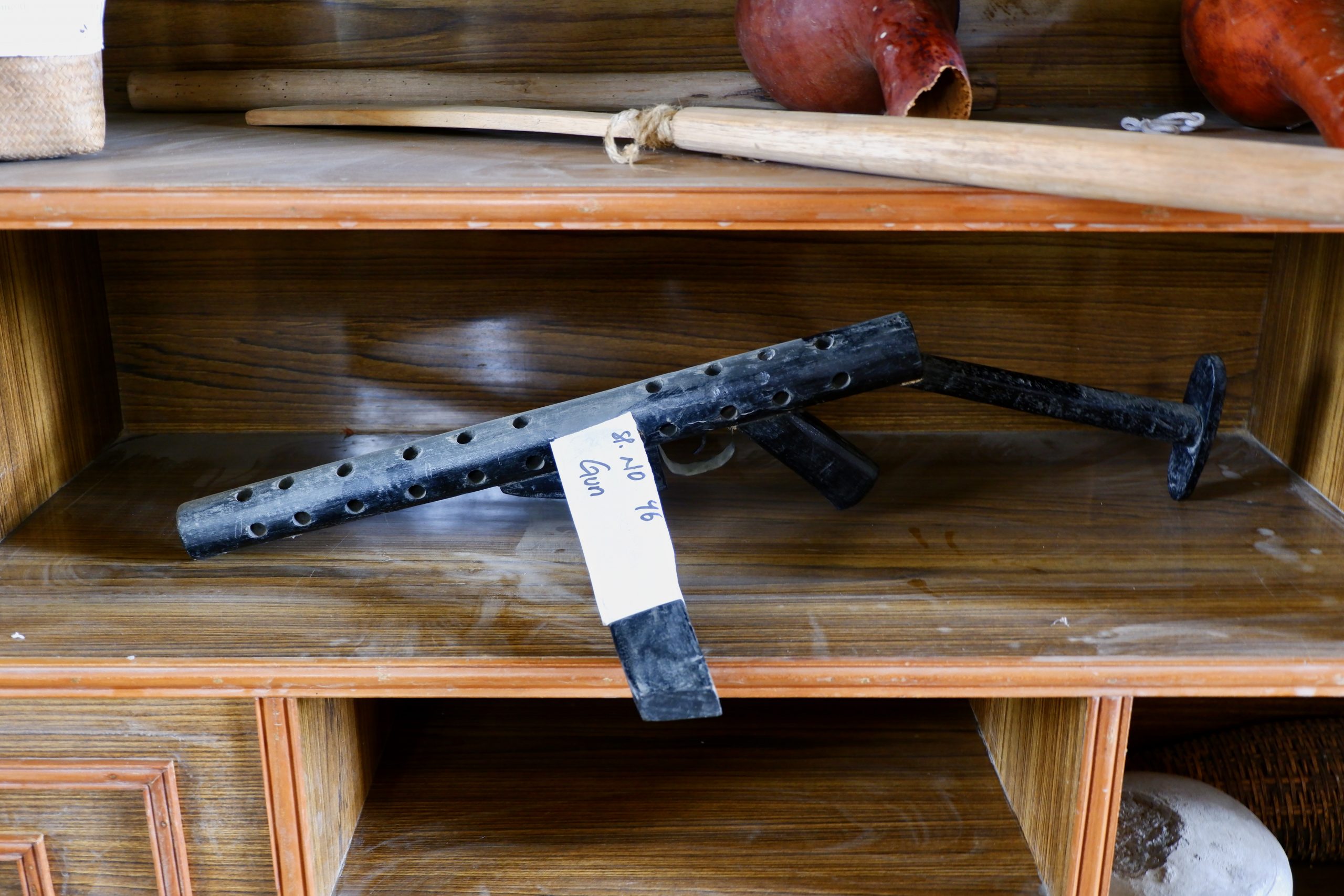 rifle
rifle
Then we went to the library next door. Our guide had also written a book — here’s a link. Unfortunately, I couldn’t buy a copy because he didn’t have one with him. I hope I’ll find it somewhere else. The library was full of English-language books — that’s the official language here. But in everyday life, people usually speak “Naganese.” It’s a kind of constructed language, quite similar to Assamese. Back in the day, many trade exchanges took place between the Naga tribes and the Assamese, and for that, they created their own invented language — which is still spoken today, though not officially recognized.
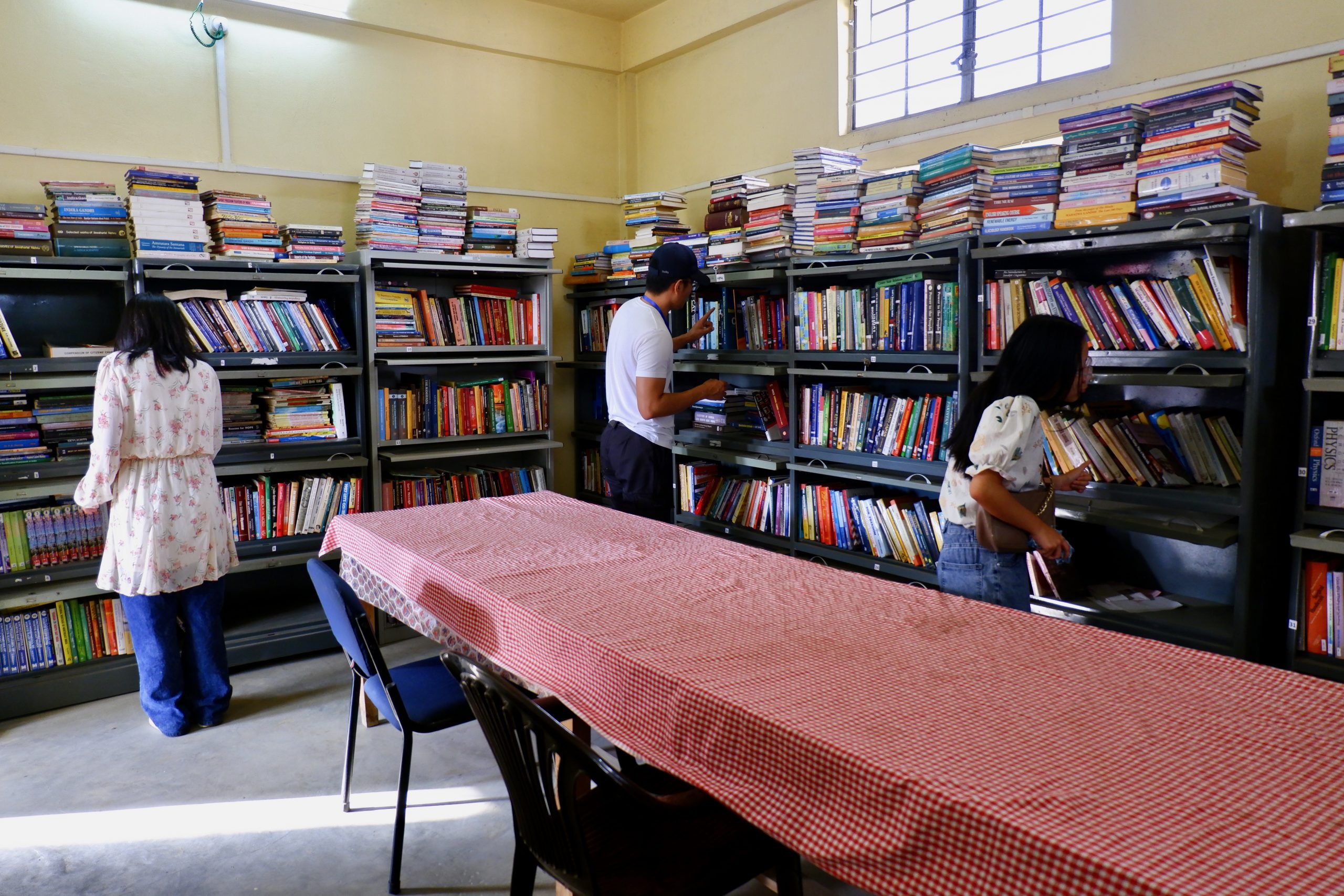 library
library
 interesting book neighbours
interesting book neighbours
I was completely filled with that feeling of living learning — it had been such a joy spending time with those two gentlemen. But the experiences didn’t stop there! We went back to the festival grounds.
Alongside all the food stalls, there were an incredible number of gambling stalls. The game worked like this: cards were placed on a grid of fields where people had placed their bets. If three consecutive cards landed on the same field, you won. At most of these stalls, the prize was a duck — like here:
 1
1
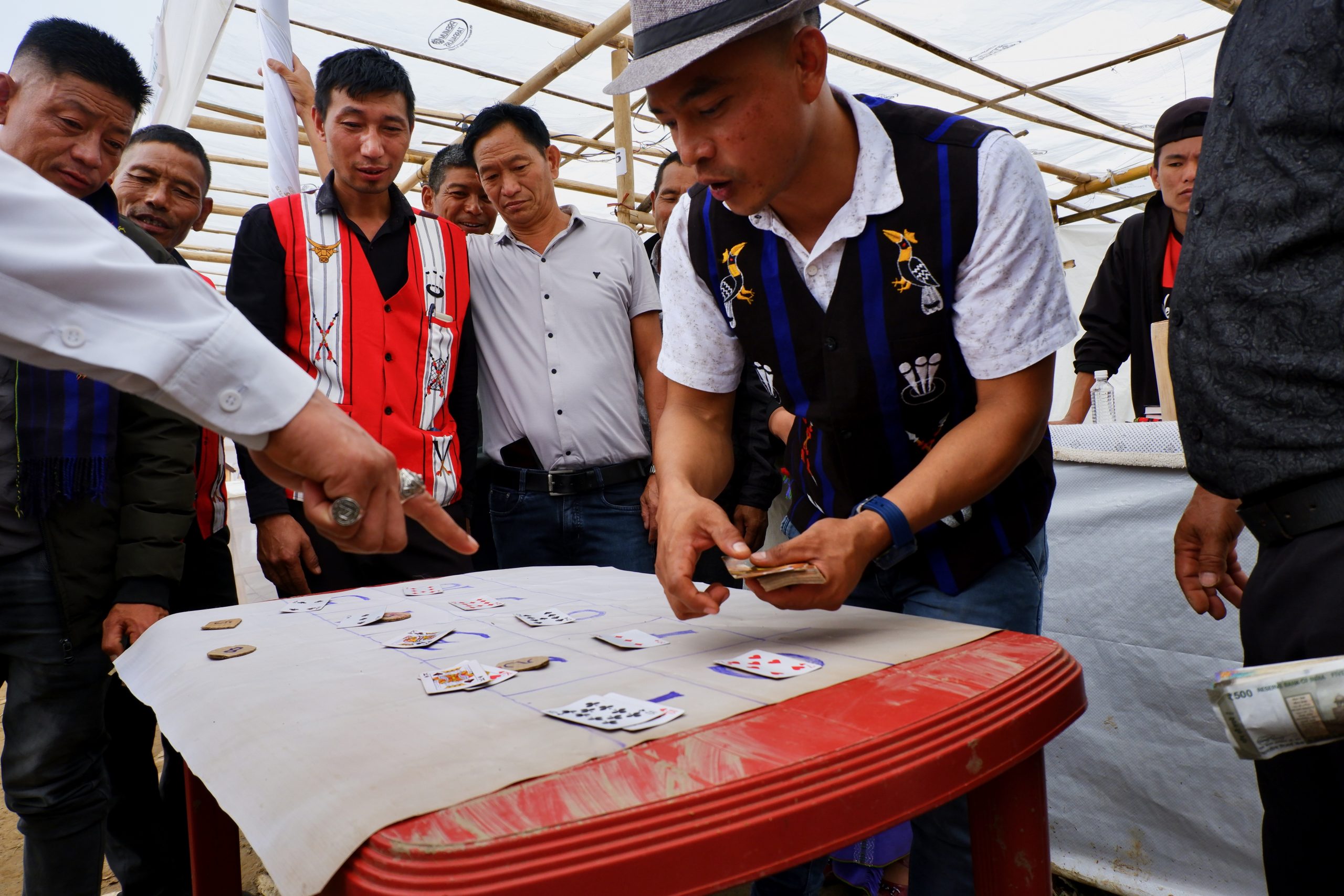 2
2
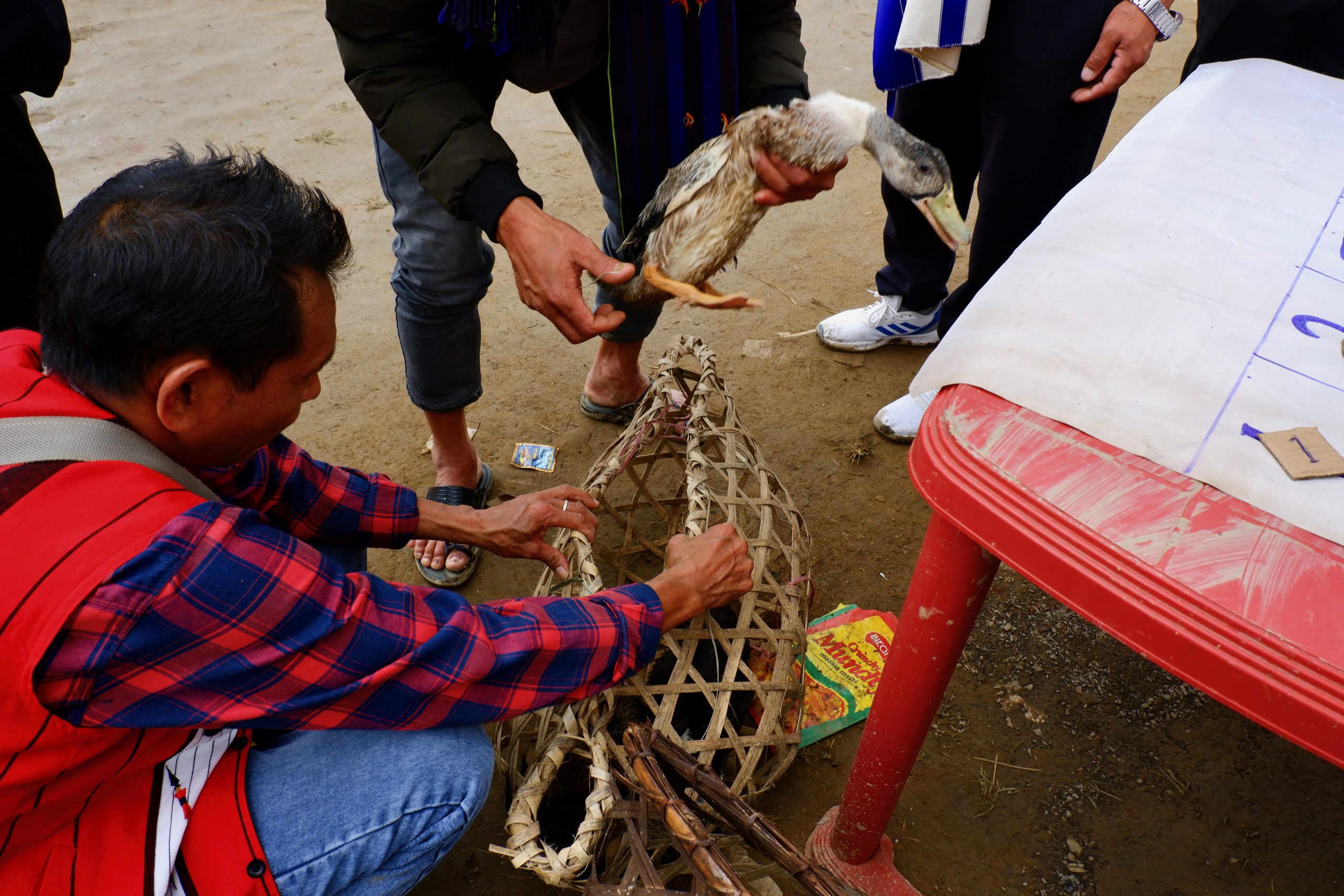 Gewinn
Gewinn
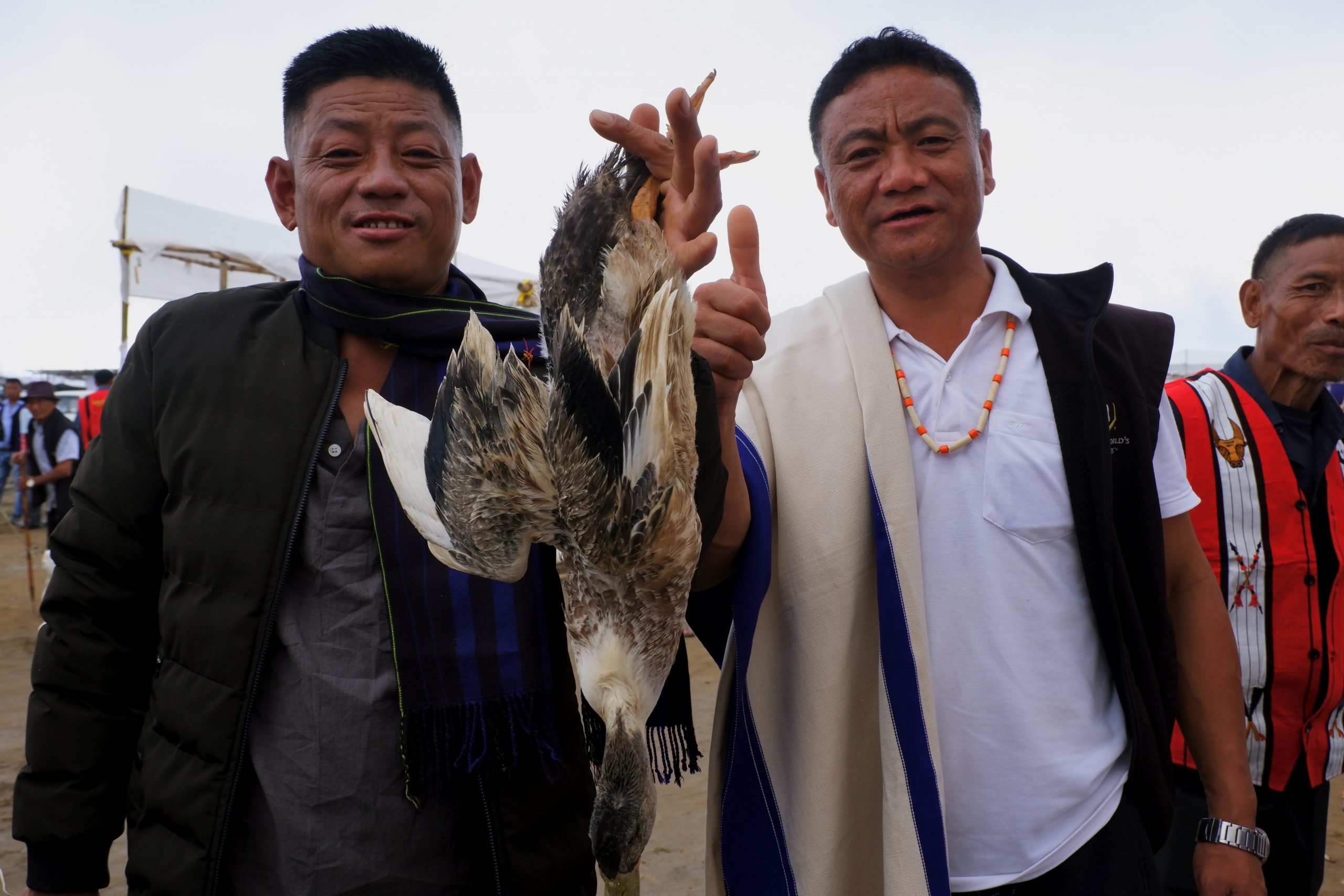 winner
winner
We were also encouraged to try our luck — but really, what would we do with a duck? At one stall, however, you could win an entire tray of eggs, and that’s when I gave in to the gambling fever! One field for the eggs cost 30 INR. I took five fields — and so did my opponent. And tadaaa! I won! A full tray of eggs for an investment of 150 INR (which normally costs around 250 INR).
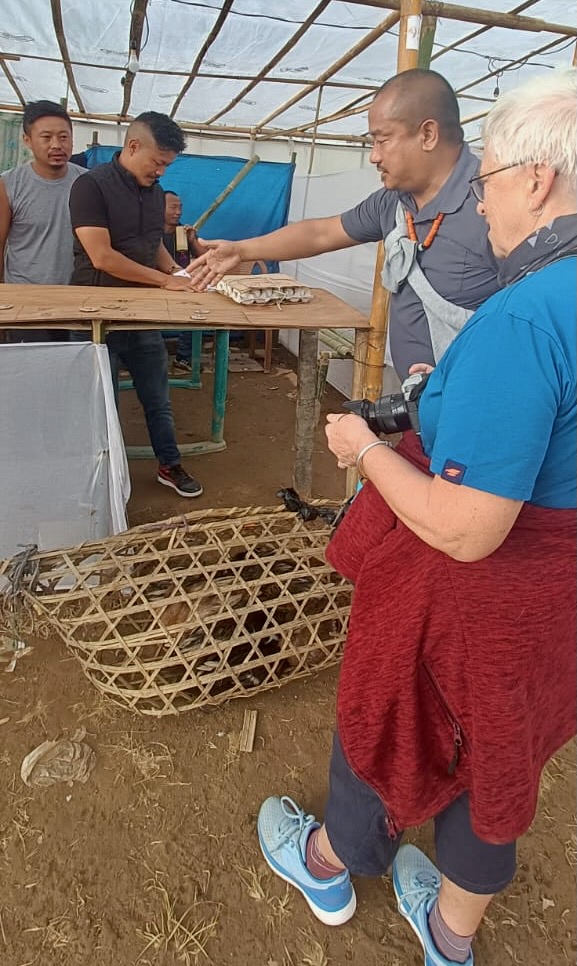 game
game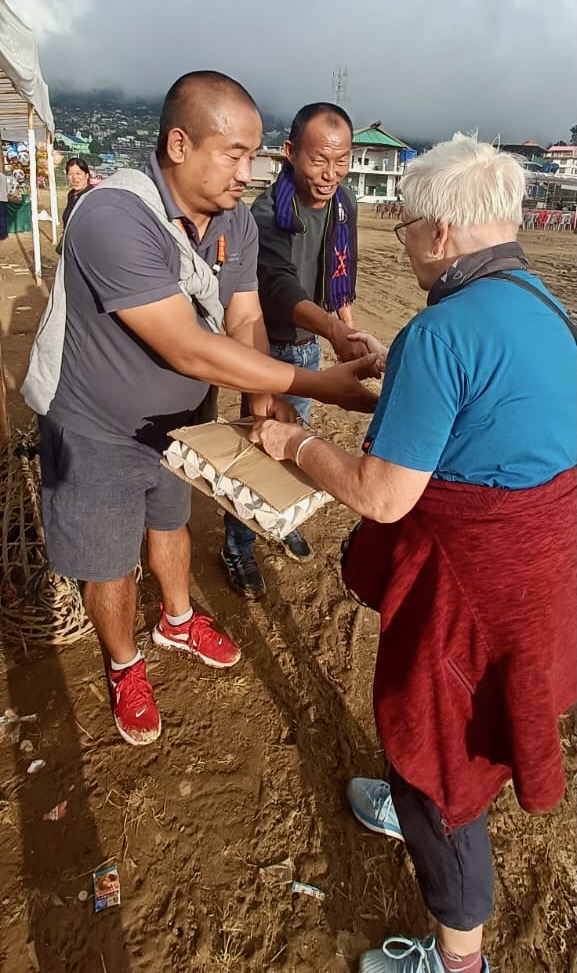 Gewinnüberreichung
Gewinnüberreichung
 winner
winner
You make friends very quickly here — especially when it comes to photos! There were actually many more little moments and observations, but this blog post is already getting quite long. So, just the ending: the stage came back to life again, this time with musical performances. The first artist was particularly remarkable.
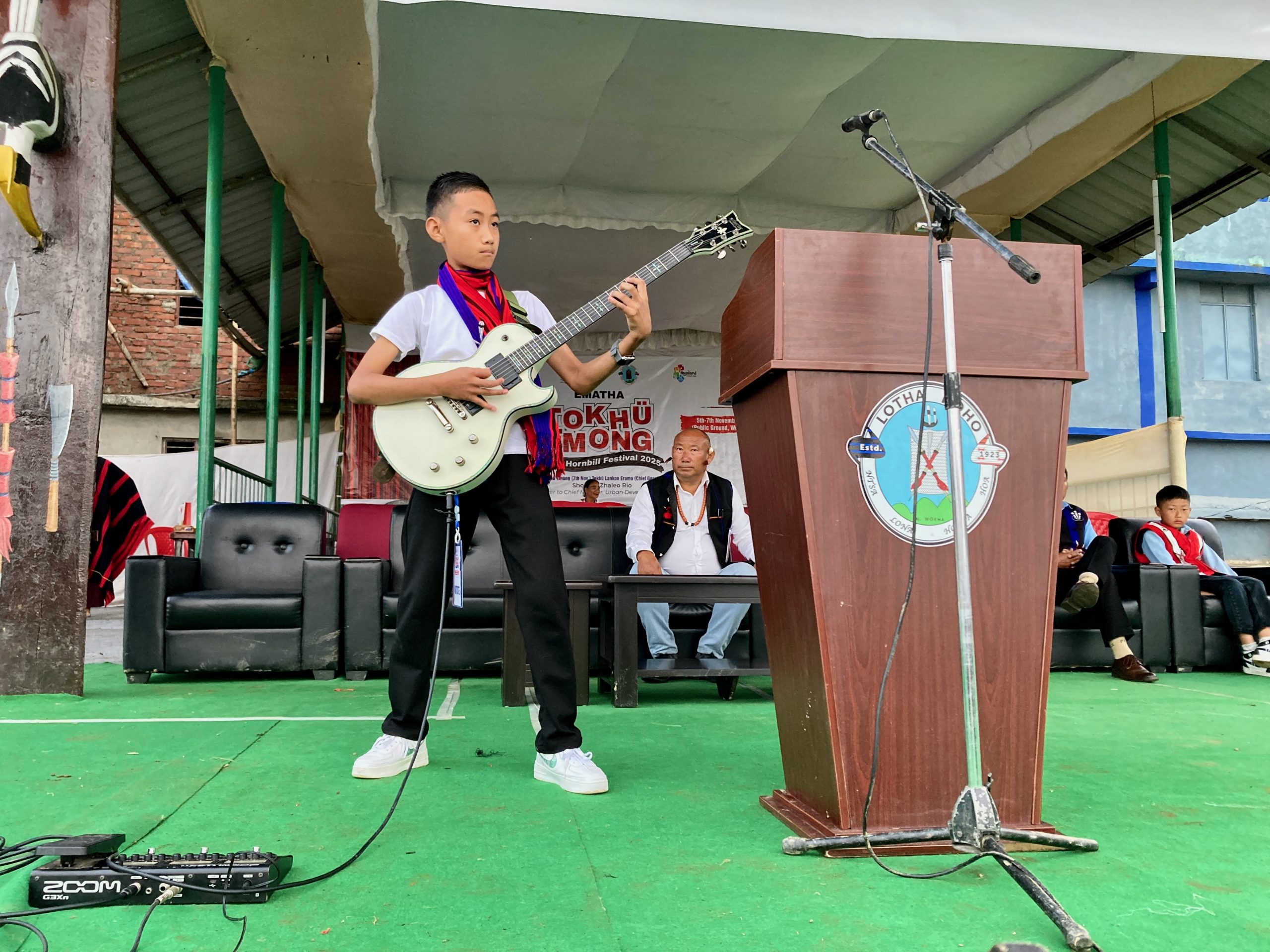 a star to come?
a star to come?
The boy played “The River Flows in You” by Yiruma and other pieces with such virtuosity and an air of calm confidence — it was really something special.
And then it was time to say goodbye. The music program was just picking up again, more and more people were streaming onto the grounds — but I was exhausted. And there were still at least two more hours of driving ahead of me.
Conclusion of the day: absolutely wonderful! I experienced so much, met friendly people, learned new things — it really couldn’t have been better. Except, of course, that I unfortunately missed the dance performances and other shows in Wokha that took place in the morning.
